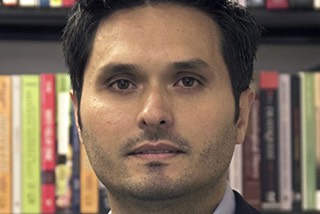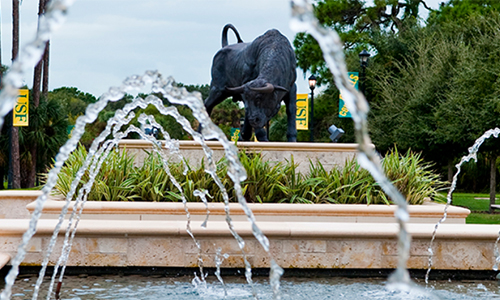A recently published nationwide study by two University of South Florida professors indicates that blacks are five times more likely and Latinos four times more likely to fear police brutality than whites.
Criminology instructor Murat Haner and Melissa Sloan, associate professor of sociology, report In “Race and Worrying about Police Brutality: The Hidden Injuries of Minority Status in America” that while only 6.6 percent of whites “worry a lot” about police violence, some minorities experience much greater fear, with 32.4 percent of blacks and 26.5 percent of Latinos reporting they “worry a lot” about becoming victims of police violence.
Conversely, three-fourths of whites “do not worry at all” about officer violence, while only one-third of minority respondents “do not worry at all” about police brutality.

Haner and Sloan, researchers at USF’s Sarasota-Manatee campus, conducted the study with professors from four other universities over three months in 2018. Their article was published online on May 26 in the journal, Victims & Offenders: An International Journal of Evidence-based Research, Policy and Practice.
“Blacks and Hispanics live with these worries that whites really have no concept of,” Sloan said, summing up. “Given the long history of racial discrimination in the United States, this divide likely has been occurring for a long time, across generations.”
The study is based on a national survey of 1,000 respondents to measure fear by how much the study’s participants “worry” about experiencing police violence.
Participants were asked how much they worry about six potential areas of concern:
- Experiencing police brutality
- Becoming the victim of a racial/hate crime
- Becoming the victim of a violent crime
- Someone breaking into your house when you are home
- A mass shooting at some event or at work/school
- Becoming the victim of a terrorist attack
The goal of asking about these other worries was to determine if racial and ethnic differences were unique to the worry of police brutality or found within other examples of victimization, and if so, to what extent.
Also collaborating in the study in addition to Haner and Sloan were researchers from Georgia Southern University, the University of Cincinnati, Xaiver University and the University of Nebraska at Omaha.
Previous studies have examined fear of police generally, but this is the first study to specifically examine the fear of police brutality. Further, the study includes a representative proportion of Latino respondents – a subgroup of the U.S. population often omitted from the area of research.
In addition to considering racial differences as related to police violence, the study suggests that for blacks, as well as Hispanics to an extent, worrying about police brutality exacts an emotional toll that is pervasive and largely hidden from view. This emotional burden is hazardous because research shows excessive worry leads to psychological and physical health consequences as well as behavioral changes.
“Research on the fear of crime shows that worries like these can lead to avoidance behaviors where people restrict normal activities and social interaction out of fear, which can lead to feelings of isolation and lower quality of life,” Sloan said. “More concerning is that this worry is justified as demonstrated by the killing of George Floyd as well as the numerous other black Americans who have been brutalized and killed by police in the past.”

The extent of this worry among blacks suggests that these consequences may affect entire communities, not only individuals in contact with police and the criminal justice system.
“Taken as a whole, what remains is an insidious picture in which communities worry about those they are supposed to trust during their greatest time of need,” Haner said. “There is a substantial subpopulation in America that worries about being victimized, not by some perpetrator, but by the state – the very people who are sworn to protect and serve them.”
To provide further context, the researchers analyzed responses about worries across the five other victimization scenarios, which are listed above.
Worries about becoming the victim of a violent crime or a mass shooting appeared homogeneous, with black and Latino respondents worrying no more or less than white respondents. However, it appeared that younger Americans worry more than older Americans about both of these events.
Uniquely, Latino respondents worried more than white respondents about someone breaking into their house when they were present. Black respondents, on the other hand, did not worry about this crime any differently than white respondents. Finally, black and Latino respondents worried significantly more than white respondents about being victims of a racial or hate crime or being victims of a terrorist attack.
To learn more about the study, visit: https://www.tandfonline.com/eprint/FRMXAXYKWP6IYR6BUYCM/full?target=10.1080%2F15564886.2020.1767252&fbclid=IwAR01Scq0BctCag3LMre31LNXk58OhgPEOi9OBJU56LYCKadEJk2N5roTxyQ.
For more about the University of South Florida, visit www.usf.edu.
